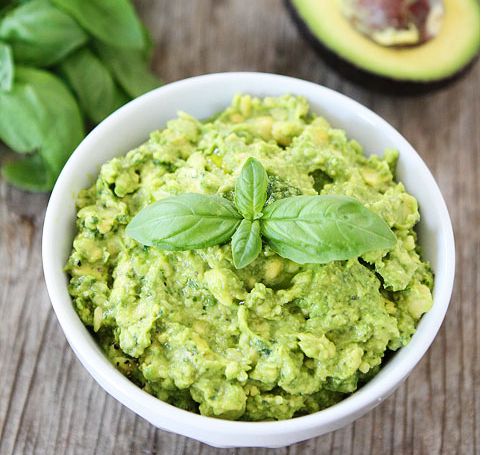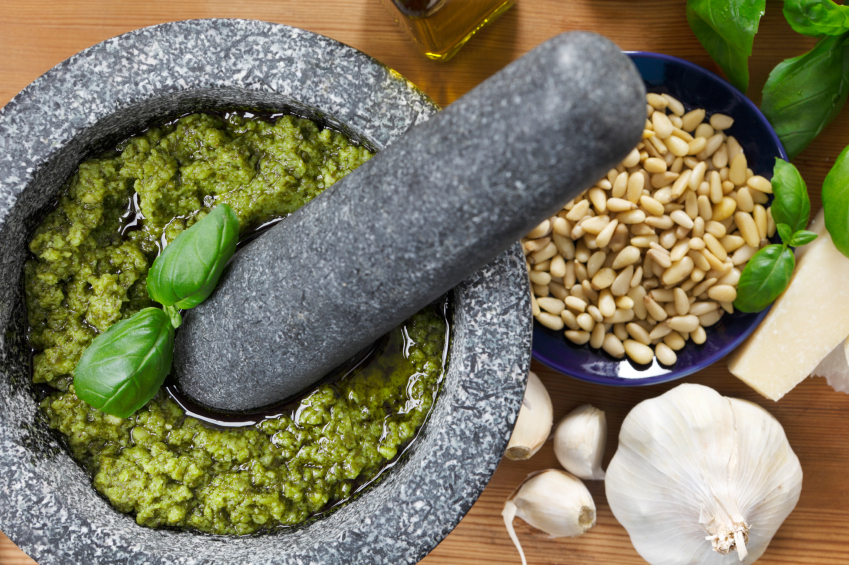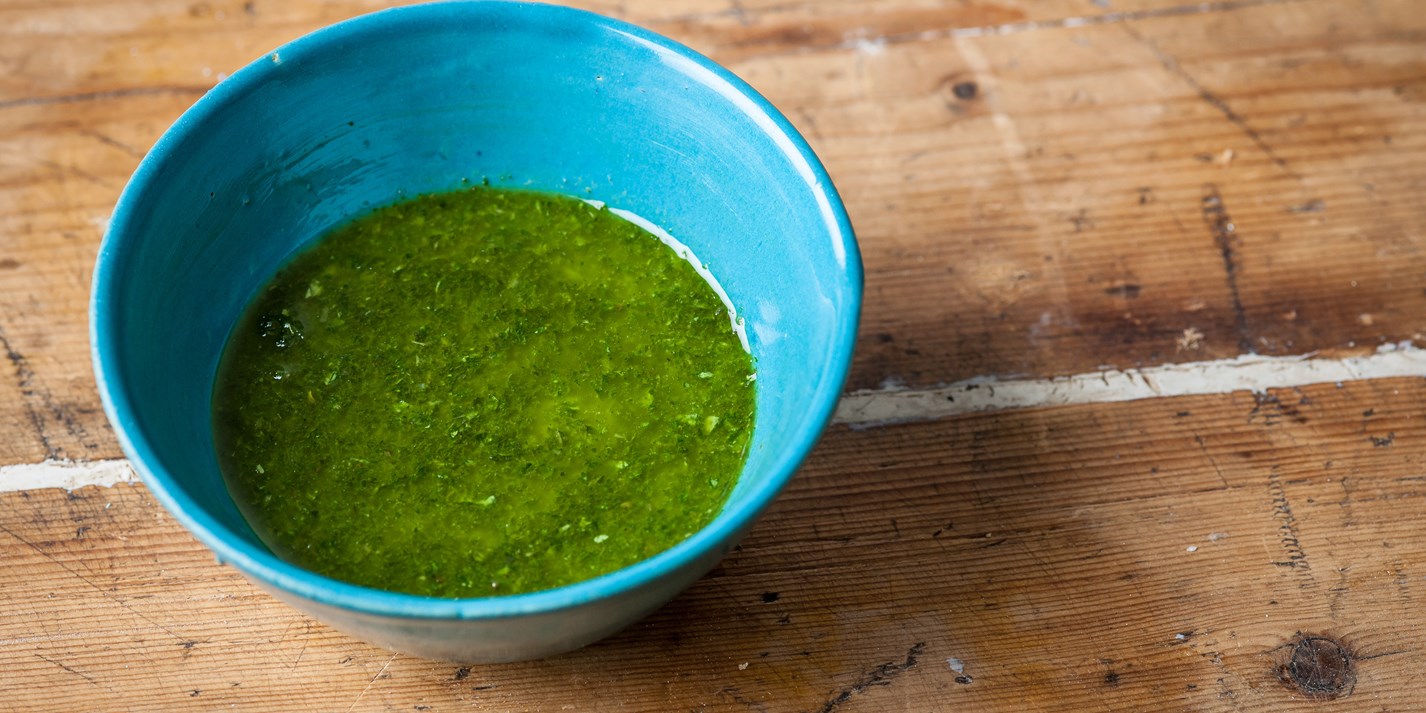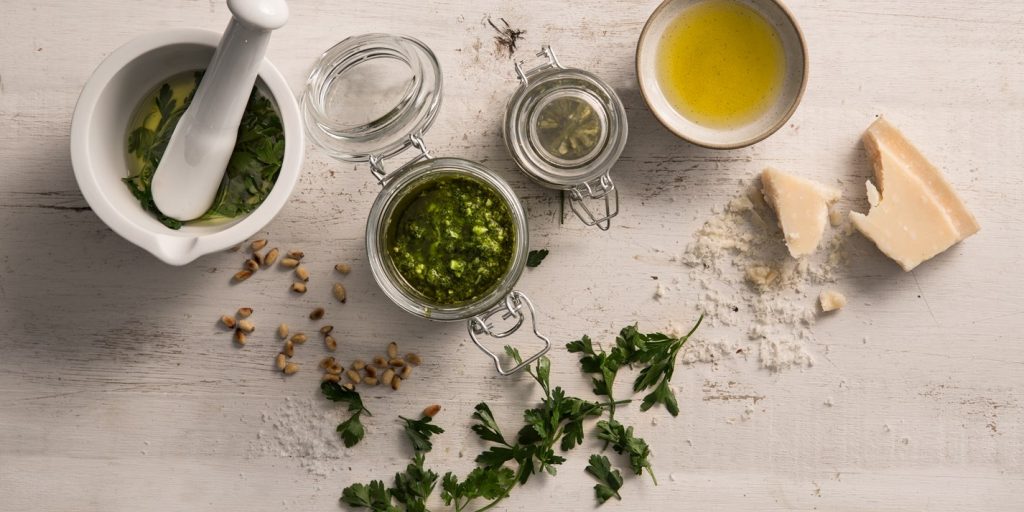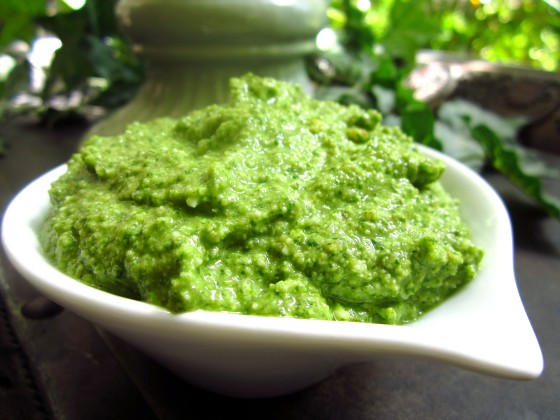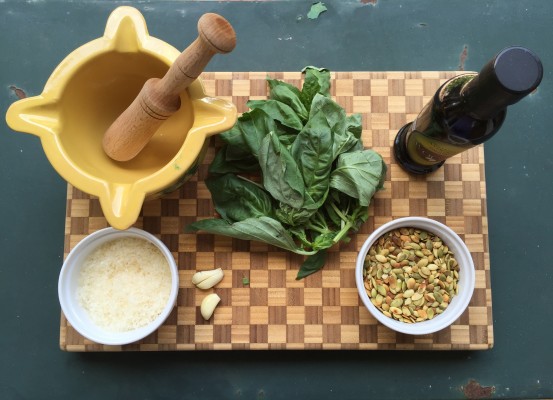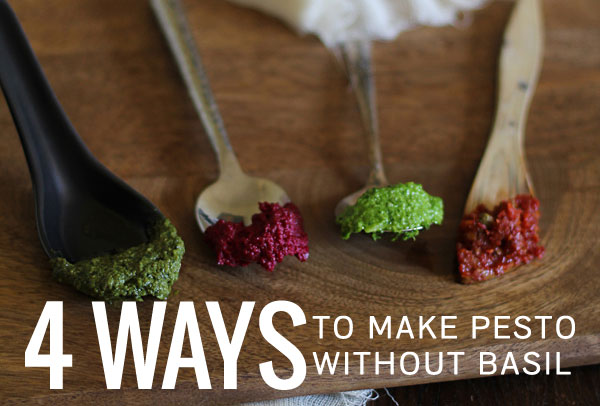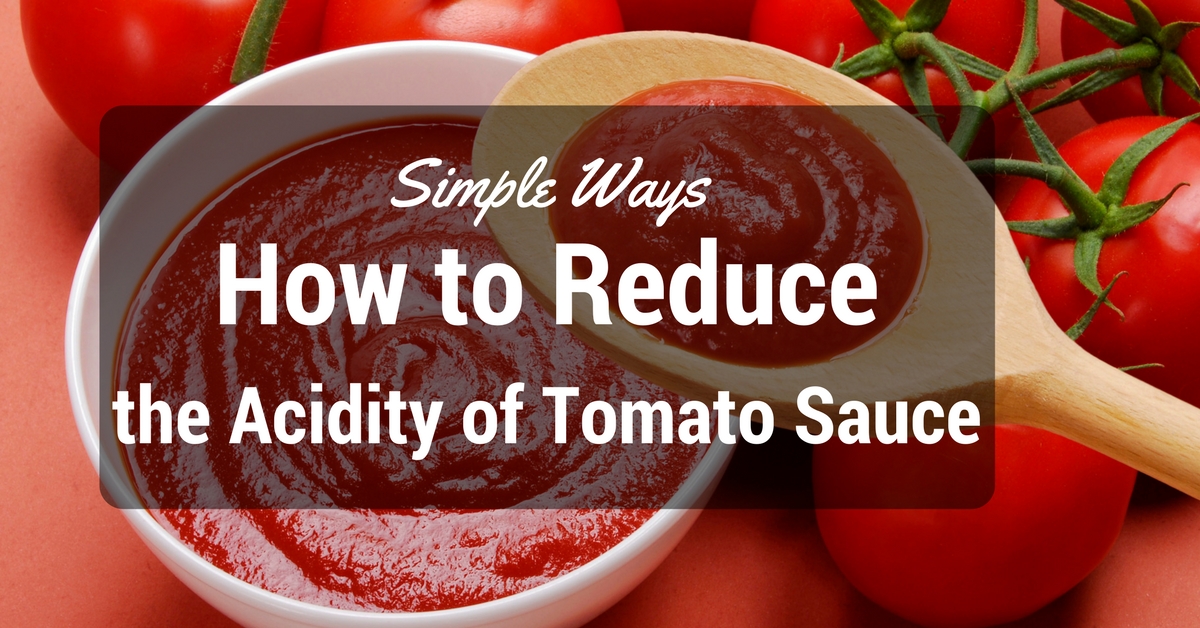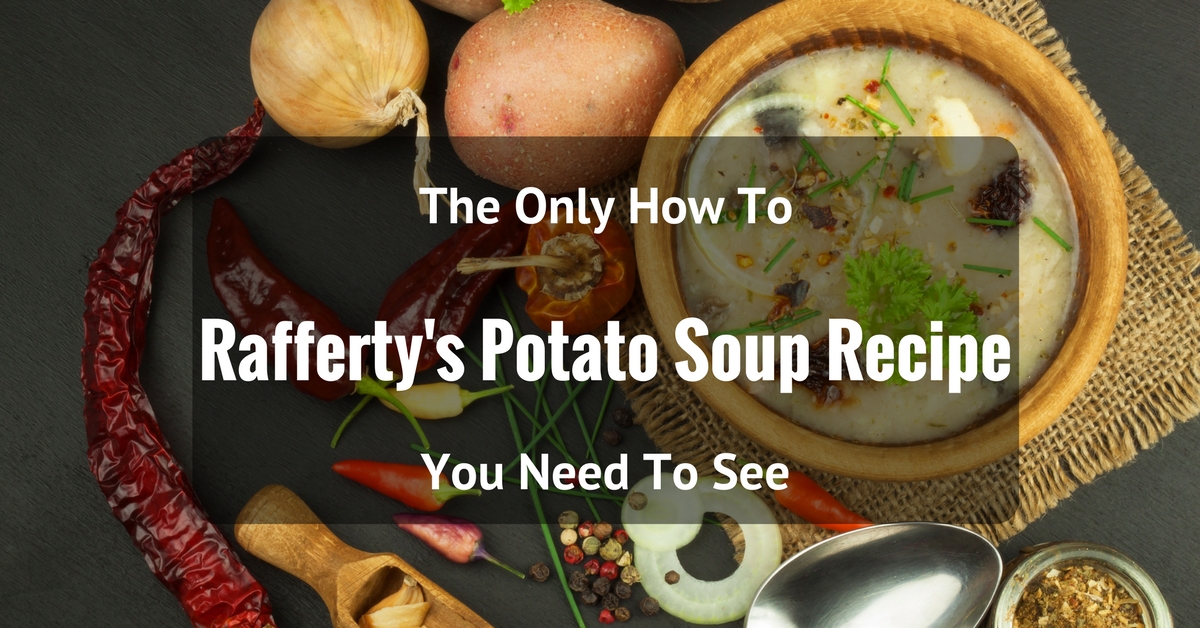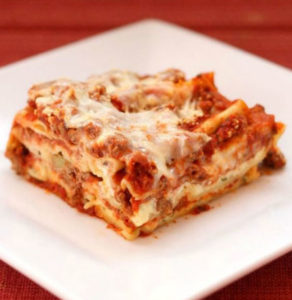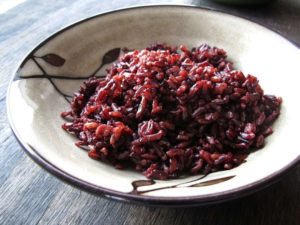Martin Scorsese once asked “If your mother cooks Italian food, why should you go to a restaurant”, and it is a pretty reasonable question. There is more to add to it, though: If you know how to prepare your own pesto, why would you buy it in a supermarket?
Without any doubt, pesto is one of the world’s most beloved sauces, and if Italians started a war for world domination with nothing in their hands but this aromatic wonder, we would all surrender to its charms without putting up a fight.
Now if you want to be a master in the skill of making pesto, instead of a humble servant purchasing an already made product in a jar, read this comprehensive guide so you can later share your wisdom with your friends and family.
More...
The Pesto Story (How It All Begun)
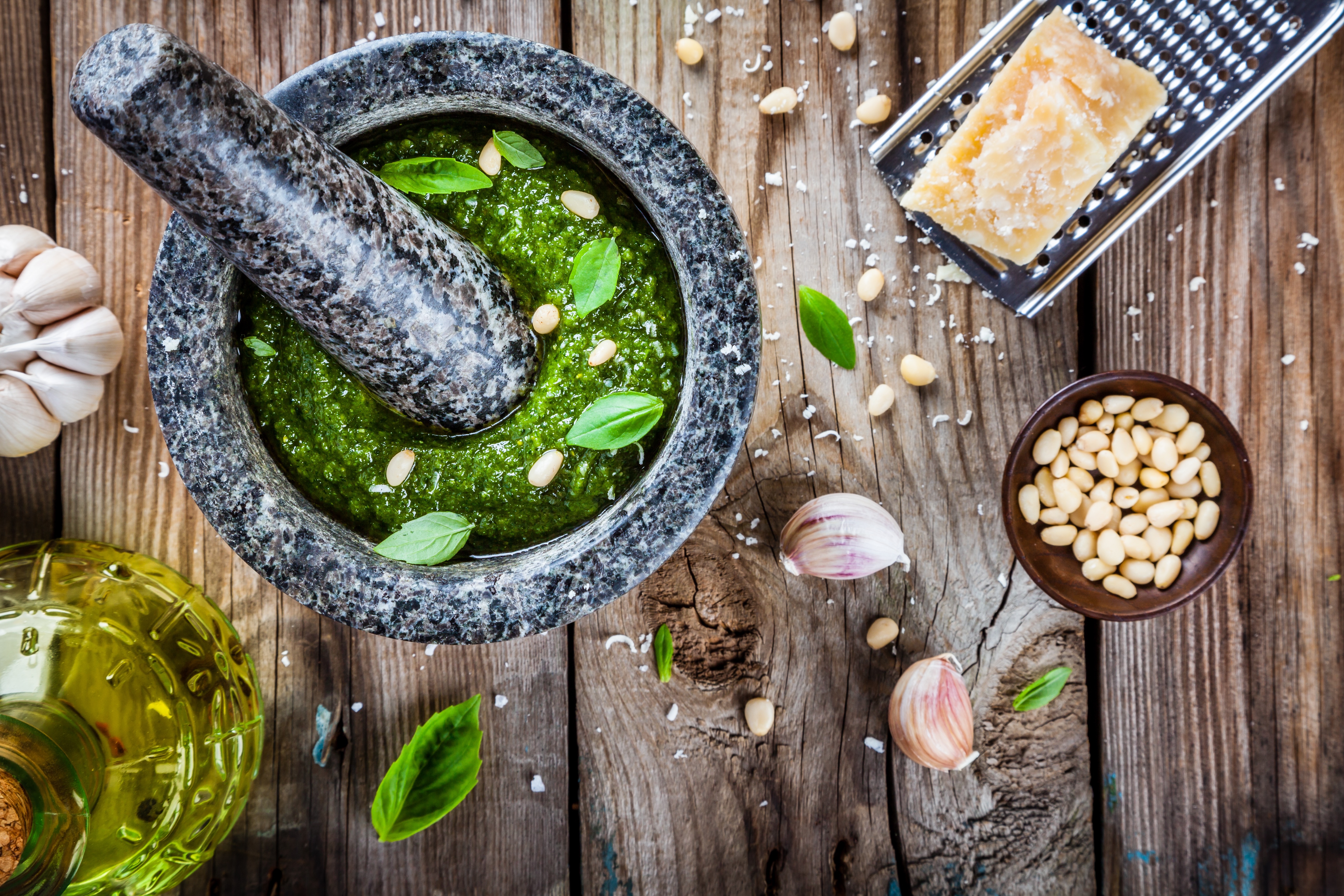
Pesto, how we know it, originated in Genoa in northern Italy (region Liguria), but even the ancient Romans ate a paste similar to this sauce that was prepared by crushing herbs, garlic and cheese together, called moretum.
From the time it was first invented, it was always prepared with crushed basil and pine nuts and Parmigiano Reggiano cheese and olive oil. The very word comes from the Italian word pestare which means to crush or to pound because the Italians prepare it by using mortar and pestle (originally marble mortar and wooden pestle).
But how did this wonderful sauce found its way here in the U.S.? It is thanks to the crews of mercantile ships which traveled from the port Genoa to various destinations. Finally, pesto found its home in Argentina, from where it spread out to the ports of the U.S. after World War II. However, pesto experienced the biggest peak of popularity in the New World during the ‘90s when Frank Sinatra commercialized this sauce with his face on the label.He definitely did it his way.
And that was the magical story about pesto’s long trip to our satisfied taste buds. Now, it is time to see did we stay true to its origins or have we failed it by turning to quick and easy solutions. What do you think?
Differences between Italian Recipe and United States Recipe
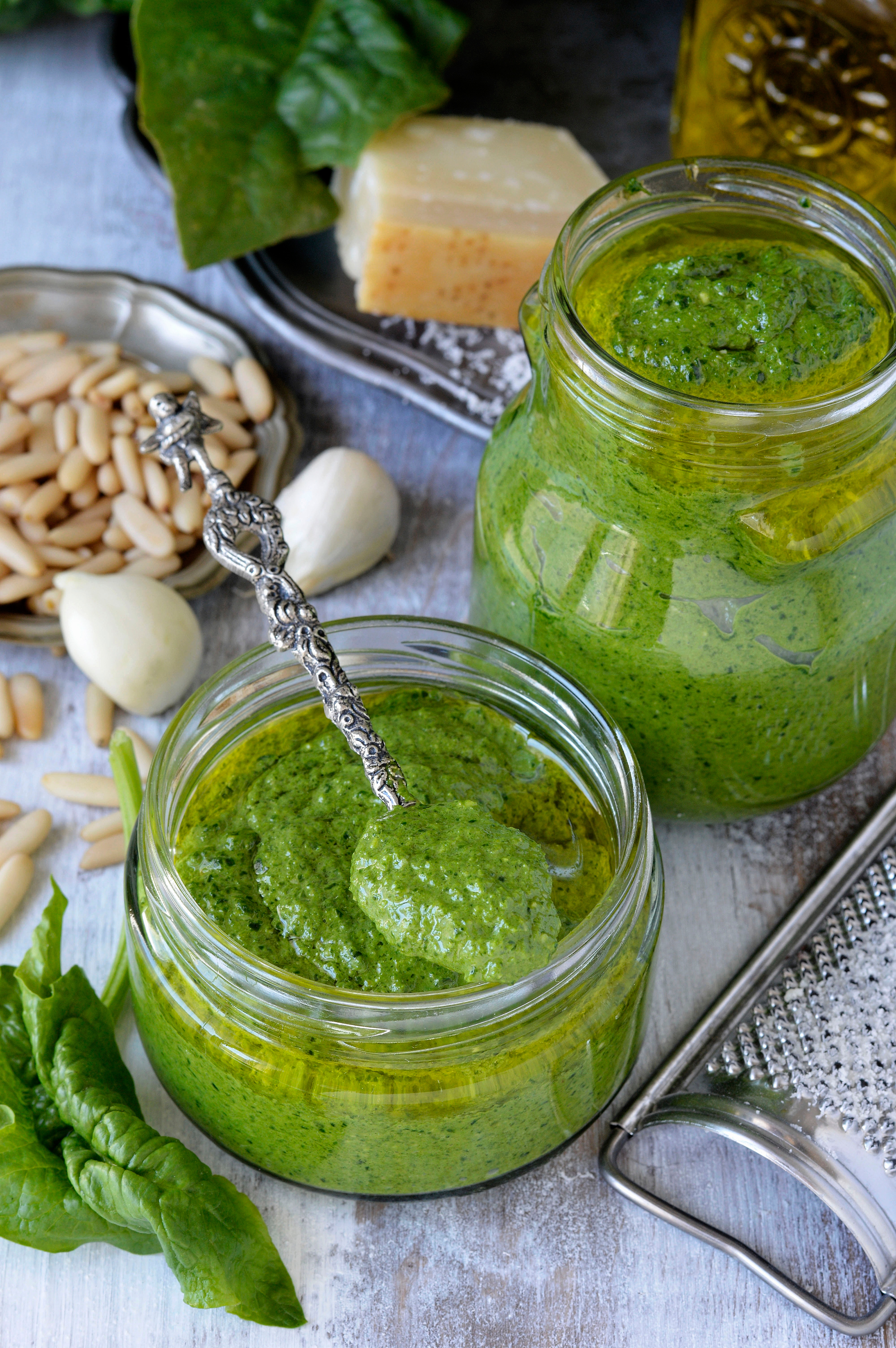
Sadly, the answer to the question from the previous paragraph is that we have altered this wonderful recipe by turning to simpler methods of preparation.
Most of the pesto we encounter here in the U.S. is different for a few reasons. First of all, the recipe for pesto in the U.S. usually includes using a machine (a food processor or hand blender), even if it is homemade.
Don't get me wrong, it usually tastes good, but because the ingredients aren't hand chopped you end up with a texture that is more like a moist paste, and there is little to no definition between ingredients. Also, there is more than one way how blending pesto into puree instead of a textured sauce changes the very essence of this dish, but more about that later.
Chopping all the ingredients by hand then pounding them with circular motions with a pestle in the mortar, and not blending them is the key for a proper Italian pesto because this prevents the sauce turning into a homogenized emulsion or paste.
When you dress pasta with pesto that has been hand chopped the minuscule flecks of basil will separate from the olive oil in places; you get the definition between ingredients, and bright flavors pop in a way they wouldn’t if they had been blended into one paste.
Pesto Alla Genovese vs. U.S. Pesto
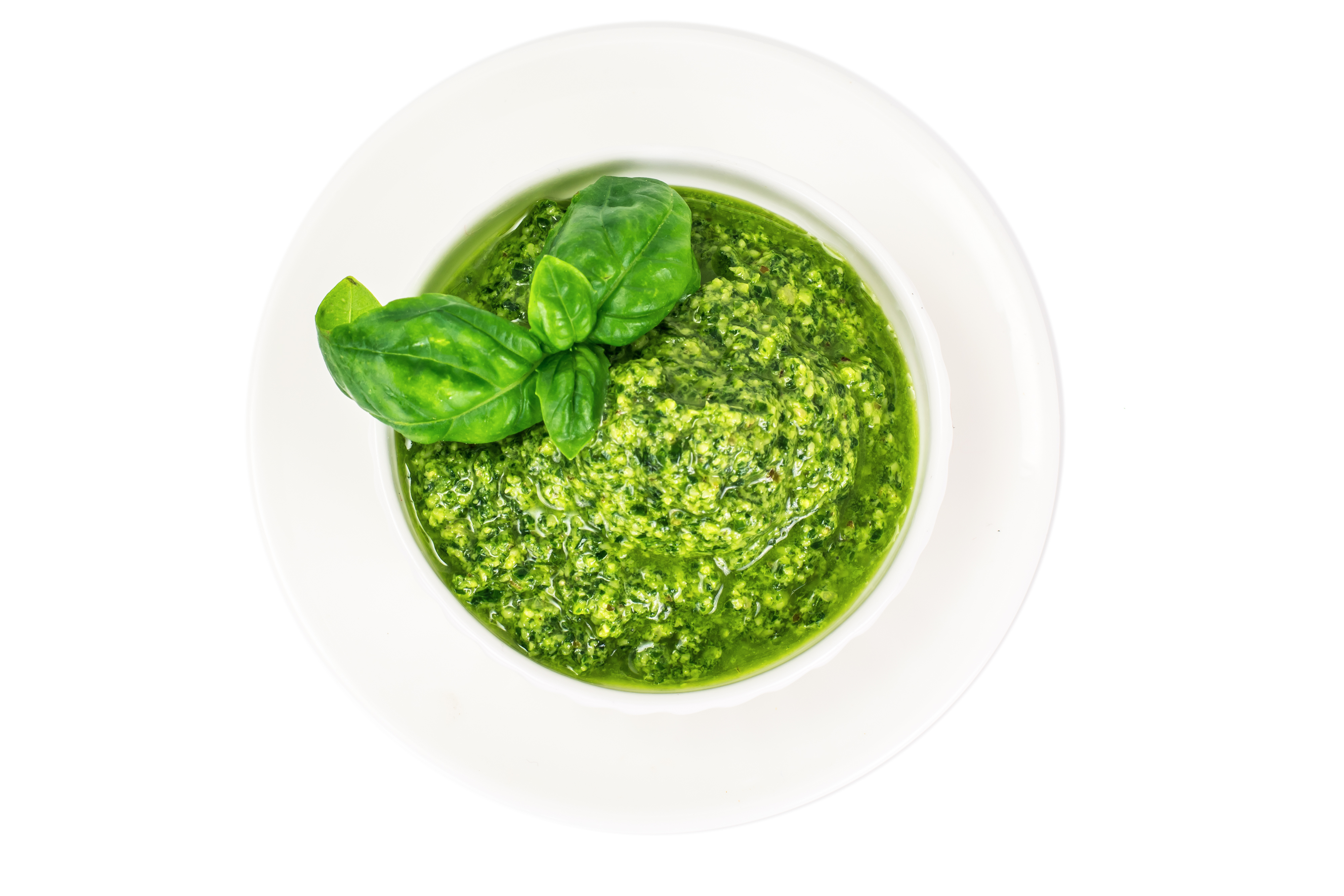
Pesto purists would tell you that the only real pesto is the Genovese one. This is the recipe we describe as a cold sauce, and not salsa because it is not cooked. It is famous for its unique texture which is quite dense and homogeneous, due to the richness of ingredients, which become denser with the addition of olive oil.
One more thing that makes the Genovese pesto so special is the basil. You see, the seaside soil in Genoa is very mineral-rich and the mild climate of Liguria is perfect for growing basil. Genovese basil has that special sweet taste, and it is one of the most beloved basils in culinary use.
The most specific feature of this pesto is its smell, and you could really recognize it with your eyes closed by the strong garlicky note and inebriant scents of basil and cheese. The taste doesn’t fall behind the fascinating scents, and it is equally as impressive. What gives the original pesto such a distinct flavor that is impossible to replicate is the Genovese basil which is picked young. While the basil adds some sweetness to it, PDO cheeses add a spicy note, especially typical for Pecorino.
One very important difference between what Italians call pesto and what non-Italians think of this sauce is that the traditional pesto is made by using mortar and pestle, while the "modern" version which is the embodiment of today’s hasty life pace is made in a food processor.
If you would try these two versions comparatively, you would instantly notice that the mortar and pestle sauce has pieces of basil of different sizes, with tender, yet assertive texture. On the other hand, the pesto made with a food processor consists of uniform little bits, and the flavors of different ingredients are mixed up.
This difference is especially noticeable when you use these sauces on pasta. The green color of the mortar-and-pestle sauce is much more present, and it coats the pasta beautifully, while the food-processor-made sauce rather sticks to pasta in small pieces.
A Few Differences Between The Traditional (Genovese) and Modern (U.S.) Pesto
Now you probably have some sort of idea between these two types of pesto, but just in case, here are a few points of dispute you should have in mind:
Genovese Pesto
- The Italians use mortar and pestle
- Genovese pesto is made with Genovese basil and the soil, climate and the fact that it was picked young define the flavor it provides to the sauce.
- Mortar and pestle pesto remains cool and uncooked.
US Pesto
- The Americans use a hand blender or a food processor for preparation.
- The high-speed electric motor and blade friction of a food processor can produce a lot of heat and thus change the delicate oils and alter the flavor of cheese, garlic and pine nuts.
- The whirring blades of a food processor suck air into the pesto mixture and carry away the volatile aromatic oils.
- Steel blades of a processor chemically neutralize the flavor compounds in fresh garlic.
- Emulsified pesto from a food processor is very different from the flavored oil mortar, and pestle method creates.
The 10 Best Recipe to Make Pesto at Home
By now you have probably figured out why it is better to use the Italian technique to prepare pesto. Sure, you will have to invest more time and attention into the preparation, but eventually, the effort will prove to be quite rewarding.
When making pesto the Italian way, there are few things you should remember:
- All ingredients must be chopped by hand. Never use a blender or a food processor.
- The procedure goes like this: chop a part of the ingredients, add more and then chop again.
- Basil and garlic are pounded first (in circular movements) and only after the cheese and olive oil are added.
- The typical ingredients to use are basil (young Genovese basil is the best), fresh garlic, olive oil, raw pine nuts and aged cheese.
- The basil leaves must be washed and dried before chopping.
- Olive oil should be buttery and mild. If you can find some made of Ligurian Taggiasca olives to make it truly authentic, that would be great, but you can go by with a more affordable alternative. Just make sure you use a quality olive oil because it can be crucial to the success of your pesto.
- Use Parmigiano Reggiano, Pecorino Fiore Sardo or Pecorino Romano cheese.
- Most Italian recipes call for fresh, untoasted pine nuts, but feel free to toast them just a bit to get a better texture and flavor. If you are planning on roasting the nuts on a glass stove top, though, be careful with the choice of the cookware
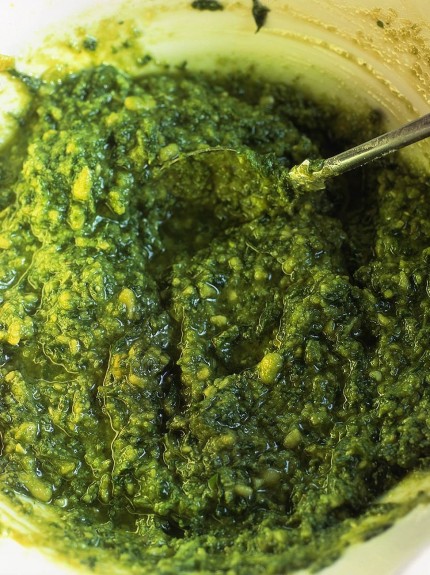
We can always expect great recipes from Jamie Oliver, and this one is no different. It is simple to make, and it is very similar to the traditional pesto recipe since it includes garlic, fresh basil, pine nuts, Parmesan cheese and olive oil, but Jamie Oliver also recommends squeezing in a bit of lemon juice if you want to add some twig to it.
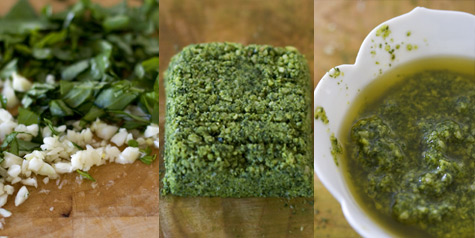
The key to this recipe is in the order of things. First, you chop the garlic, and then one part of the basil. You move on to chopping the rest until you add half of the pine nuts and chop that too. The last step is adding Parmesan which must be freshly grated.
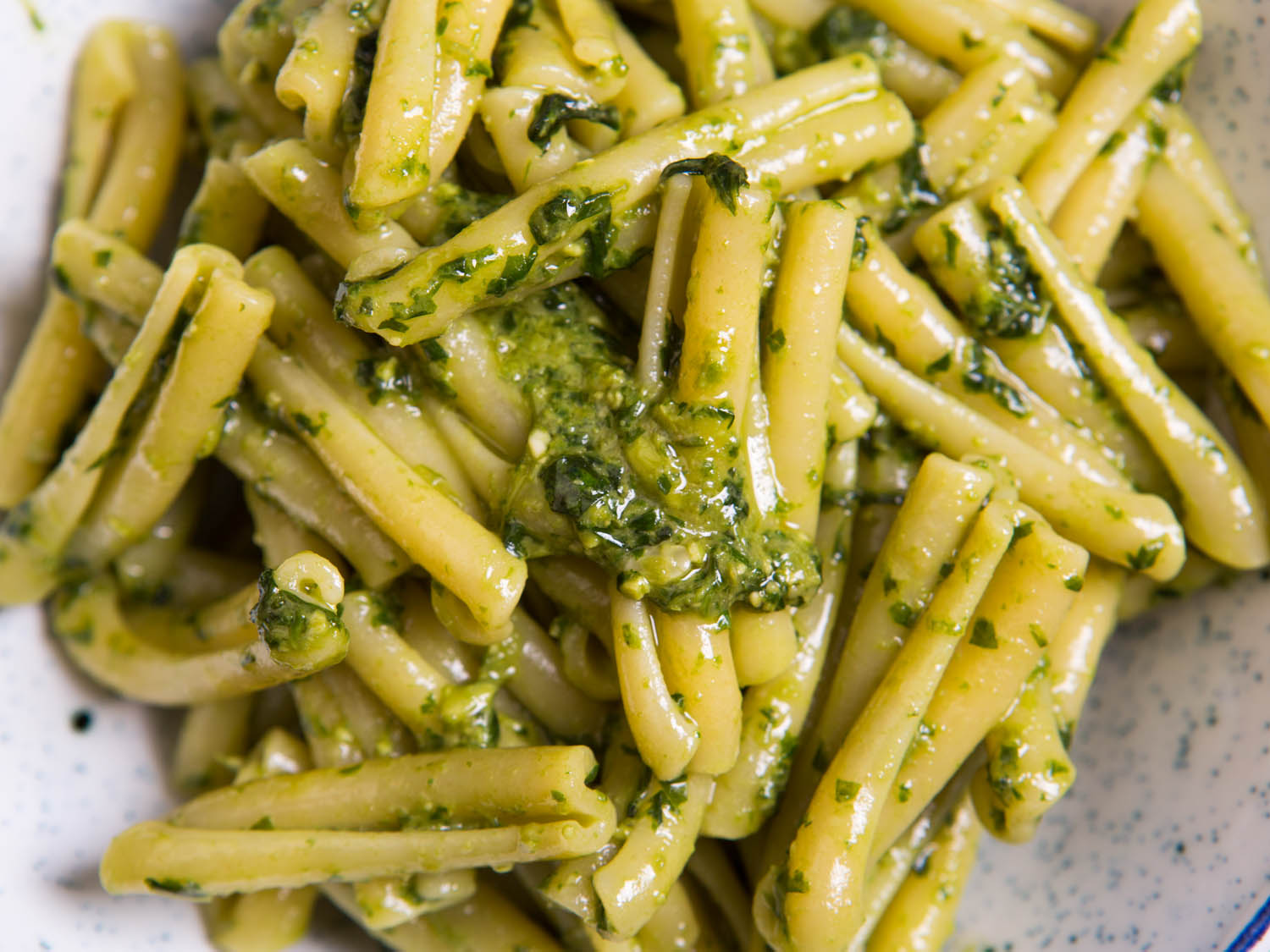
There are three things that make this pesto delicious and as close to perfection as it gets. First, the ratio of ingredients is carefully thought through, and it results in an amazing taste. Second, Pecorino Fiore Sardo is a mild sheep's-milk cheese, and it creates a more balanced, less harsh pesto sauce than you would get with cheeses like Parmigiano Reggiano. Finally, the mildly flavored olive oil creates a more balanced, less aggressively spicy sauce.
Kira Volpi will teach you to prepare homemade Pesto the way people do in the Cinque Terre (5 lands) region in Northern Italy. This mixture is special for containing Pecorino and Parmigiano cheeses, producing the perfect balance of sharp and mild taste. Although she used a food processor to prepare her pesto, I would still suggest sticking to the mortar and pestle.
Chefs Antonio Carluccio and Gennaro Contaldo are famous for their perfectionism when it comes to Italian cuisine, and it is no different with this aromatic sauce. There are two main differences between their pesto, and what we’ve discussed in previous paragraphs. This pesto includes pine nuts that are baked in the oven, and when done, the sauce is put in a hot pan plate to warm, dry and fry. Copper cookware might be the best for this job.
Adam Grey’s is renowned for adding his own twist to classic recipes, and he has done the same with pesto. The most obvious difference between his take on pesto and the traditional version of this sauce is the addition of the flat-leaf parsley which brings clean, bright flavor and a lettuce-like crunch into the mixture. He also replaces olive oil with rapeseed oil.
Danny aka Food Urchin has replaced regular garlic with wild one for this recipe, and I must admit, it seems like an excellent idea. Its taste is more delicate and mellow than that of the regular garlic, and it reminds to the flavor of chive. Although a great recipe when it comes to ingredients, I would still prefer to avoid the food processor.
Again, this recipe uses a blender, but walnuts make an interesting twist, and you can take a few hints from it when it comes to ingredients, but still remain faithful to the good old mortar and pestle method. It also includes a peculiar ingredient you would not expect to see in pesto – melted butter, but give it a shot; you might like it.
Let’s get one thing clear: pesto is perfect as it is, but a bit of improvisation can’t hurt from time to time, and this recipe really plays on that card. It is outraging enough to use walnuts instead of pine nuts, but pumpkin seed? That's really something. Another alteration, although not nearly as drastic as this one, is the use of avocado oil.
There is nothing I like more than the good old pesto Genovese made with Genovese basil. However, trying something new is never a bad thing. Oh, My Veggies gave four exciting alternatives to what we like to call pesto and prepared this sauce with cilantro, parsley, beets and sun-dried tomato. If nothing else, you'll end up with a richness of different colors in your pesto collection.
Tips from Professionals
Making pesto is not a joke, and although the fantastic ingredients are there to ensure that no matter what you do wrong, the taste is still great, there is always a place for improvements, and who is better to teach you than the best professionals out there? So go through their tips and prepare to stand shoulder to shoulder with them proudly.
The Kitchen gives you a detailed guide about how to prepare the pesto properly (the American way), but it also gives some handy tips about the amount of olive oil. Namely, if you use more olive oil, the pesto will be ideal for pasta and soups because it will be easier to stir in, but if you use less you will turn it into a true sandwich and pizza delight.

Food Network will help you figure out not only how to make pesto, but also how to store it if you are not planning on using it straight away. To cut the long story short: after you put the pesto in an airtight container you should drizzle some oil over the top.
Simple Recipes suggest using Romano cheese if you prefer stronger taste than one of Parmesan cheese. Also, if you want your pesto to retain the vibrant green color for a longer period, you can use their trick of substituting half of the basil leaves in the recipe with fresh baby spinach leaves.

Epicurious shares a Ligurian tip with you: mix a small ladle of the cooking water into the sauce a few seconds before adding it to the pasta or noodles to dilute the concentrated pesto and make it adhere to noodles.

Damn Delicious will support you in your decision to prepare pesto in a food processor, but they are strongly advocating against using a blender. So, if you want to save some time and avoid mortar and pestle method, at least don’t use a blender.

BBC Good Food claims that you need only 15 minutes to make the perfect pesto, and no one can argue that fact (except Italians, who are accustomed to the good old mortar and pestle). Also, in their recipe, the pine nuts should be cooked in a frying pan.
Bon Appetit shares some really great tips about this beloved sauce. One of them is that, although you can complement basil with other herbs and veggies like kale, parsley, and cilantro, you should always go for only one bold flavor so that it doesn't overpower the aroma of basil, which is, after all, the protagonist of pesto.

Serious Eats give a completely new take on preparing pesto. They boil the basil and the garlic, and although an Italian nonna would look down on this blasphemy, if it floats your boat, go for it.
The Cookful gives an abundance of great tips about making pesto you can print out and hang on the wall of your kitchen so that you never lose sight of them. It also offers neat alternatives if you don't have some ingredients on you. Yes, you can use pecans instead of pine nuts, and any hard, salty cheese if you don't have Parmesan cheese.

Inspired Taste suggests blanching the basil to avoid pesto becoming brownish after some time of keeping it in the fridge. They also make a bold move of using mint leaves instead of parsley as a green addition to the sauce.
All of these tips can sound a bit contradictory, but it is up to you to go through them all, and see which ones suit your own method of preparing pesto, and which one yield the best results for you. If you would take my advice though, I would always recommend that, at least for your first try in preparing this sauce, you should stick to the most traditional method there is. Leave the experimenting for the time when you’re more experienced.
Pesto – Common Mistakes
We all make mistakes, and even if you have prepared pesto so often by now that you can make it while sleepwalking, you can still stumble on some things you haven’t predicted. To avoid that from happening here are the most common mistakes that can happen when making this sauce, and tips on how to avoid them:
1. Using Dried Herbs

This is a rookie mistake, but I have to mention it since some people believe that dried herbs are better because they can be kept longer than fresh. Although there is some reasoning behind this, it is nowhere near as possible to prepare pesto with dried herbs. To be honest, a jar of pesto won't last you until the expiration date, because it's too delicious not to eat it right away. Fresh herbs are essential for successful pesto, and dried can come nowhere near their texture and flavor.
2. Using Only Basil
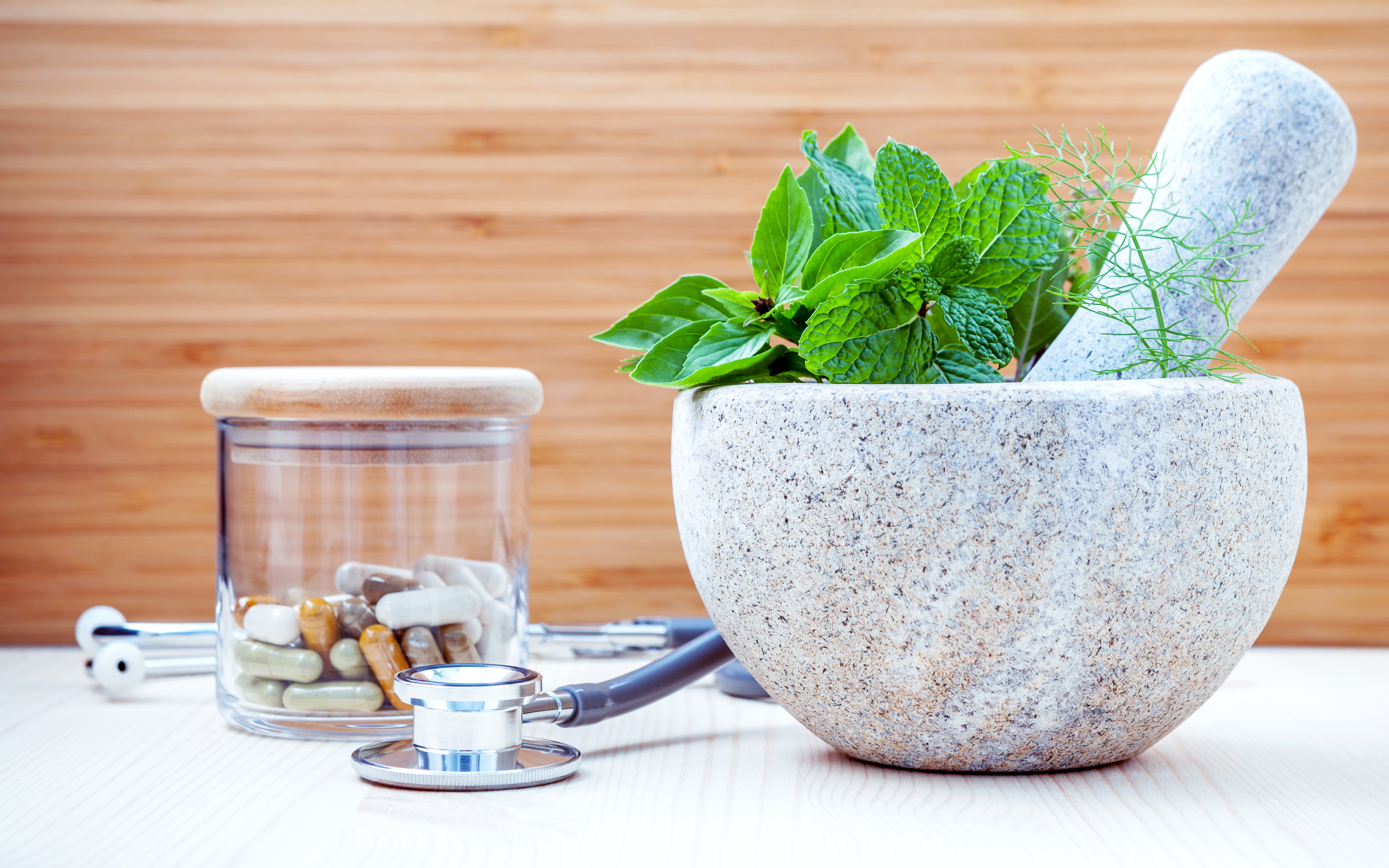
Basil is, as I've already mentioned, the protagonist of pesto, but every great movie needs supporting cast as well. Other leafy greens and herbs can only improve the taste and the color of pesto, especially when used in smaller amounts that don't allow them to overshadow the taste of your star herb. However, don’t get carried away and throw in everything from parsley to kale. Decide for one or two herbs or leafy greens.
3. Not Washing The Ingredients Properly
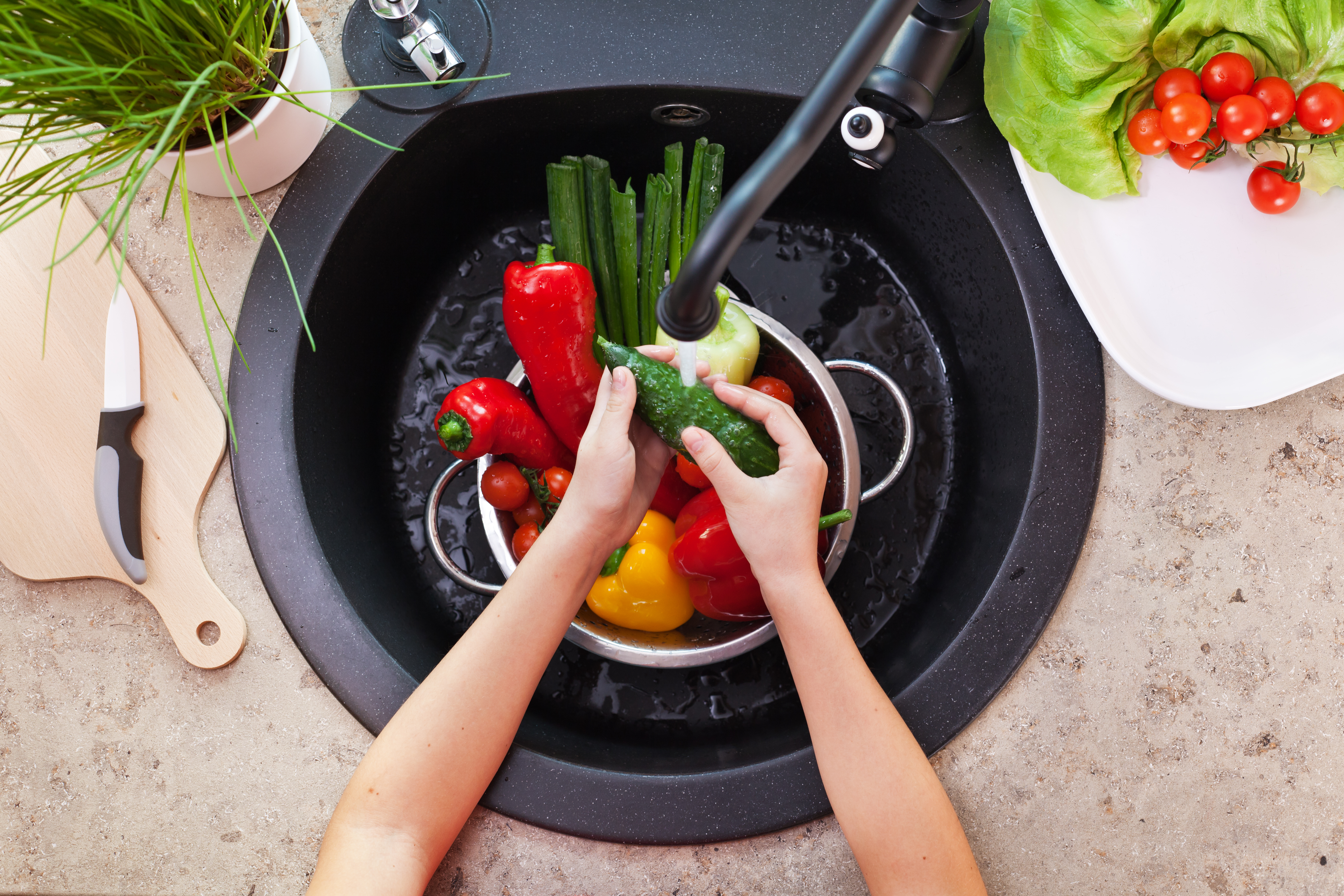
You can be earth-lover all you want, but you can't love the gravelly texture of pesto. It is simply wrong. All the ingredients must be properly washed and patted dry before incorporated into the sauce so that it can receive the best texture from each of it, rather than an extra ingredient of dirt.
4. Overdoing On Garlic
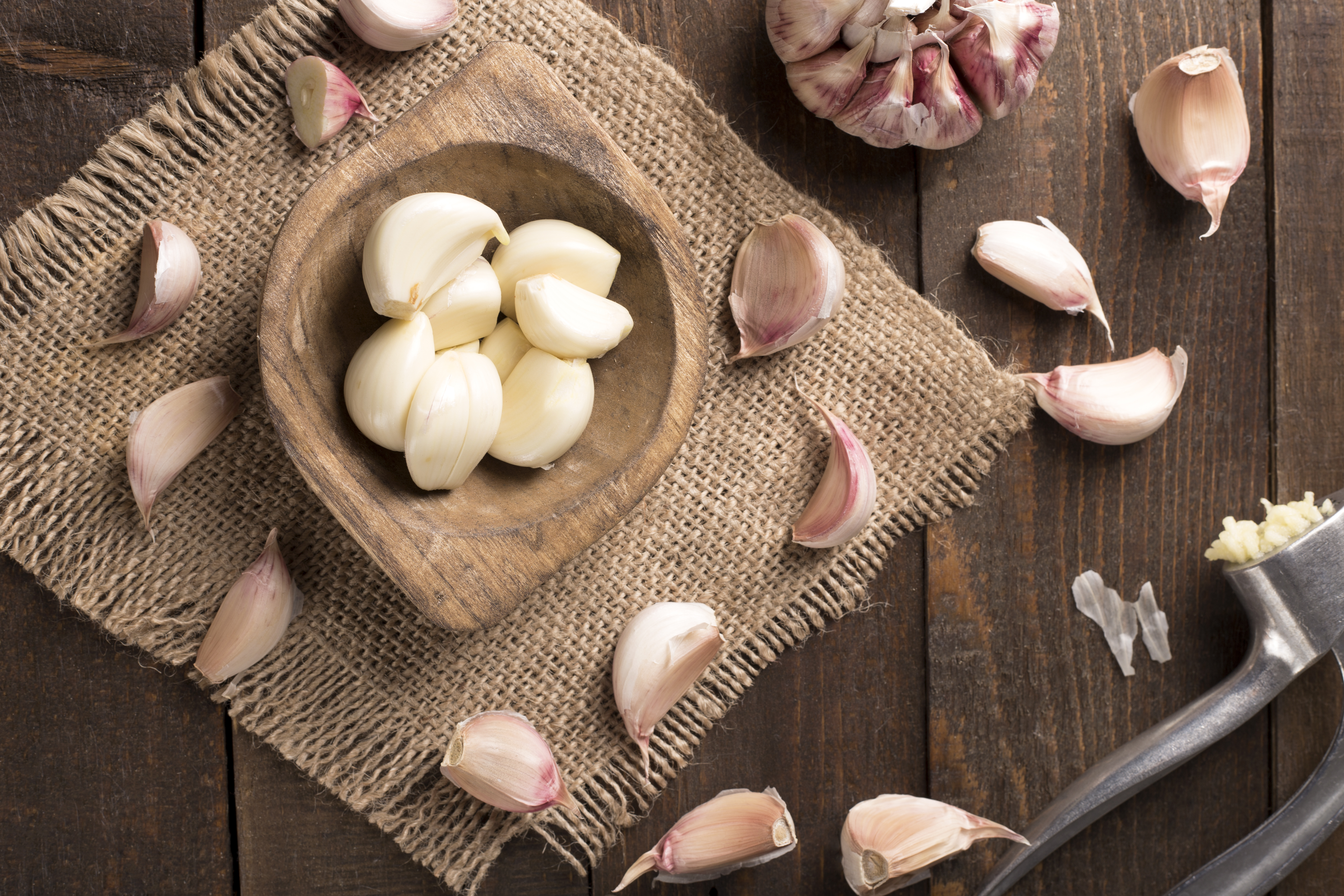
I get it, you like garlic. Who doesn’t? But garlic has an overpowering taste and aroma, and if you overdo it, it will ruin the balance of flavors pesto is so famous for. Sure, vampires might be repelled by it, but so will all around you. Normally, an average pesto should contain one or two cloves of garlic of average size, but the most ideal measure is one and a half. If you, on the other side, prefer a more delicate taste, you can ditch the garlic entirely and turn to wild garlic as Danny from Food Urchin.
5. Letting The Food Processor Do All The Work
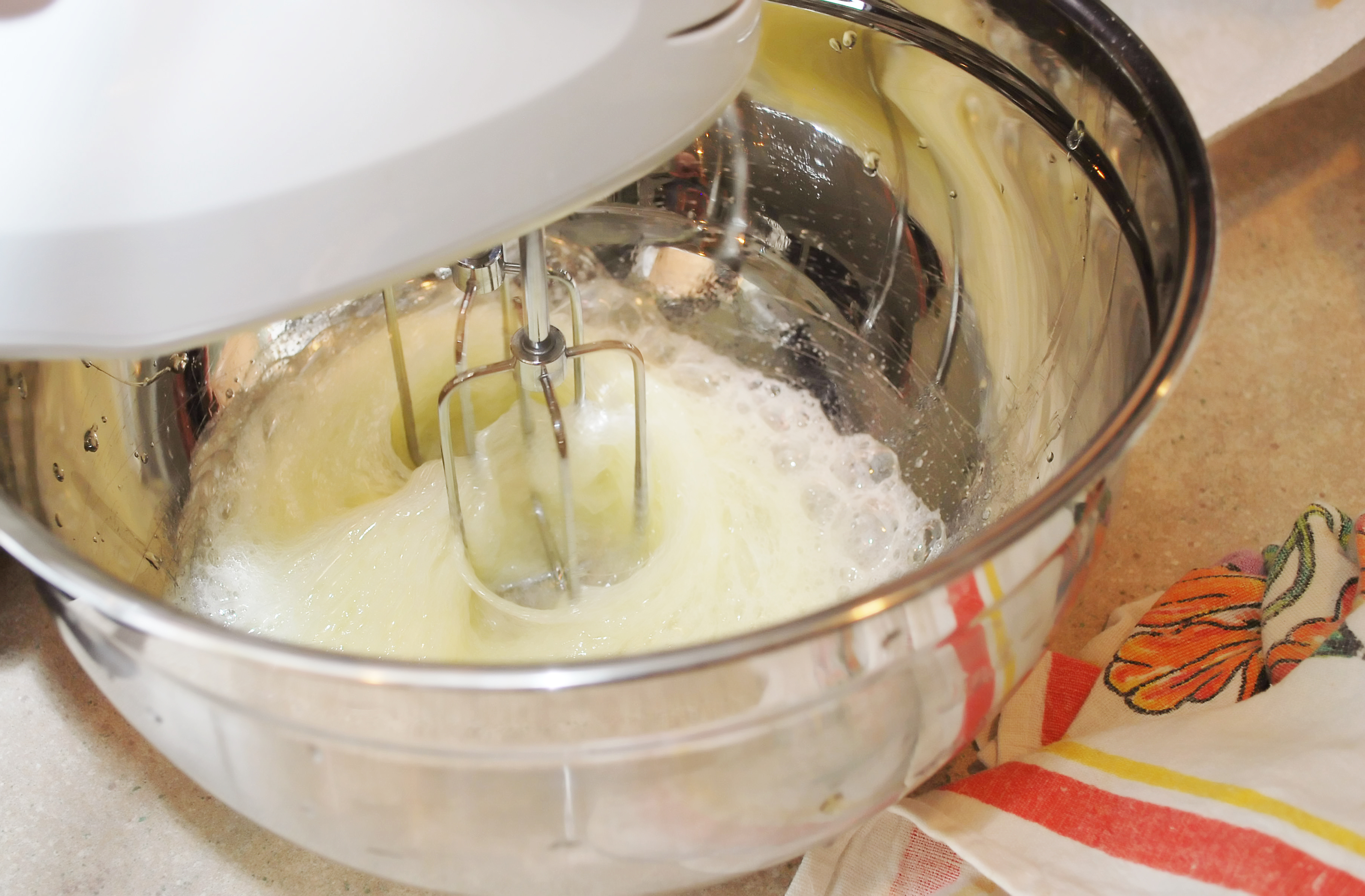
So, you have probably figured out that I have a lot to say about using the food processor for making pesto, but in all honesty, it is completely justified move if you are in a hurry. However, nothing can justify the overuse of food processor in this case. Do your best to at least chop some of the ingredients before throwing them into the machine. Every decent knife set will have a good chef’s knife to do this part of the job, so you have no excuse.
6. Pureeing The Pesto
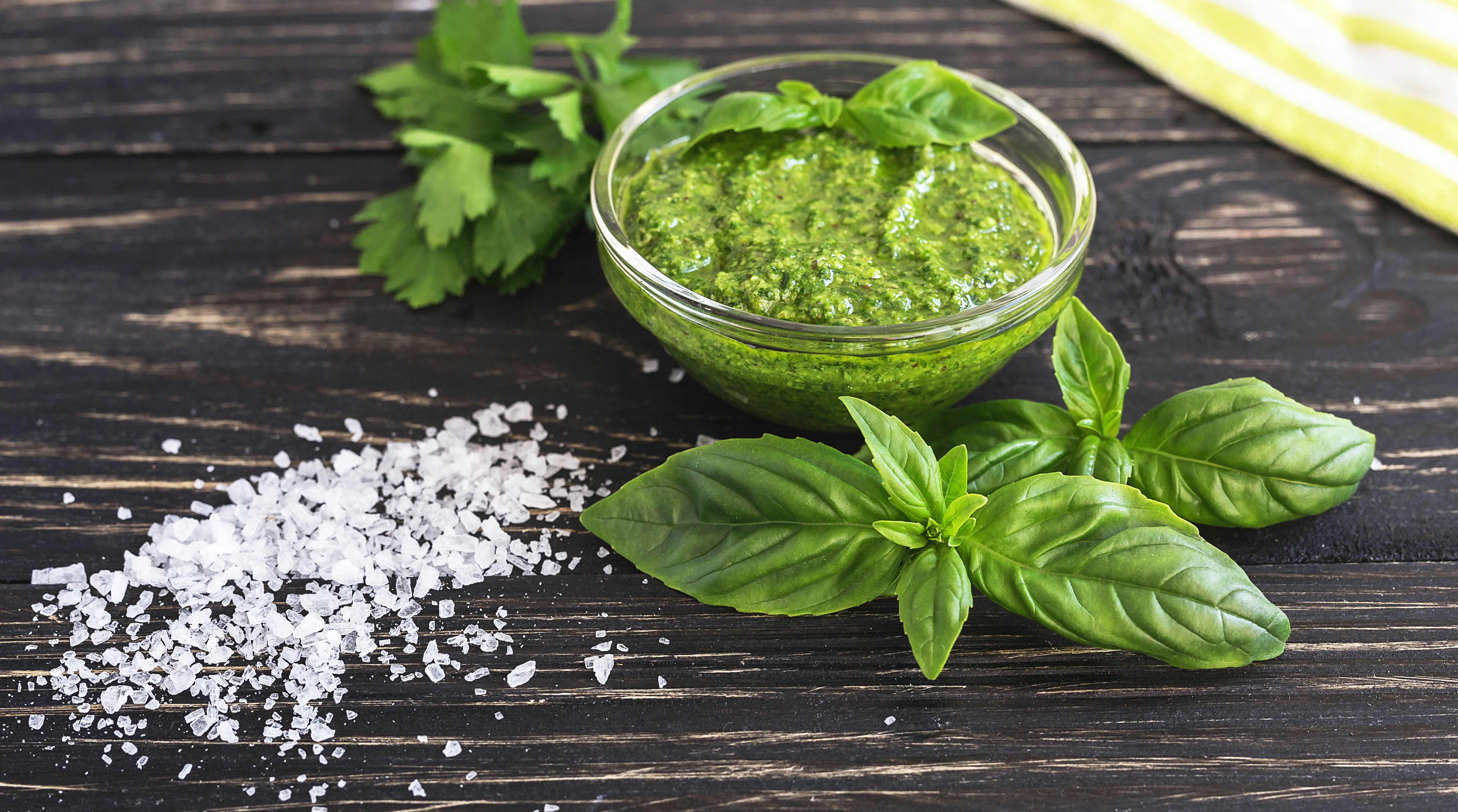
Another bad thing with the food processor (as if there weren’t enough of those) is that people often get carried away and end up pureeing their pesto. What’s wrong with that, you might ask. Well, after a short time you will notice discoloration in the pesto, and it will not have the rich texture it should. So, instead of pureeing, pulse it two or three times and turn the processor off while the sauce is still a bit rough.
7. Using Too Little Olive Oil

Some people are trying to make everything low-fat, and while it is perfectly reasonable to try to live a healthy life and eat low-fat food, pesto isn't about the restraint, it is about enjoying life in all its beauty, so don't refrain from using plenty of olive oil and cheese. They provide it with a creamy texture and magnificent taste, so don't take that away from it – you only live once.
8. Including Any Cheese
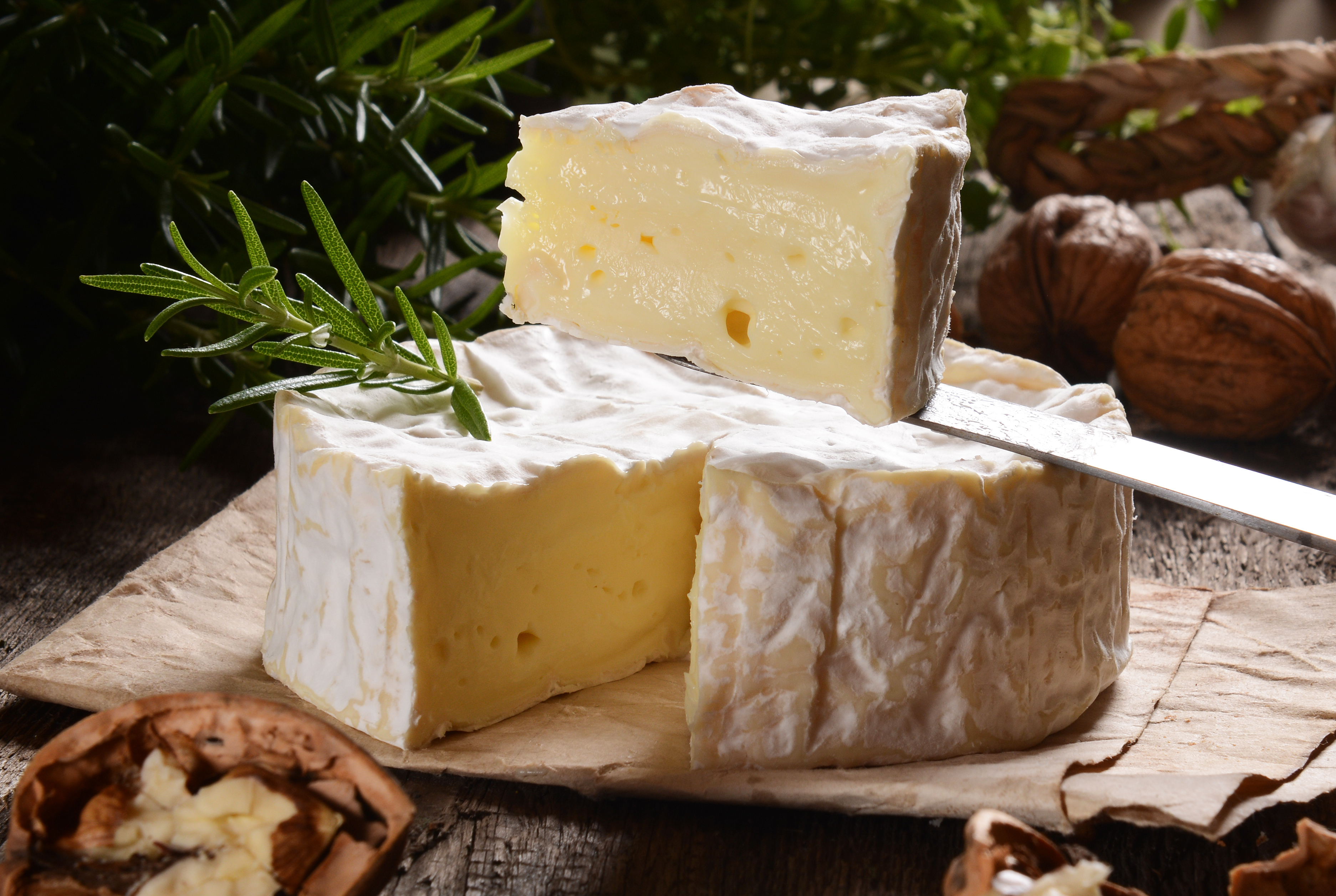
No, any cheese won’t do. If you have a creamy fresh cheese in your fridge and think that it is a good ingredient for your pesto, think again. Pesto must be chunky and not universally smooth. To achieve that, you have to use hard, salty aged cheese because it is one of the reasons why it ends up with such a recognizable texture.
9. Not Roasting The Nuts
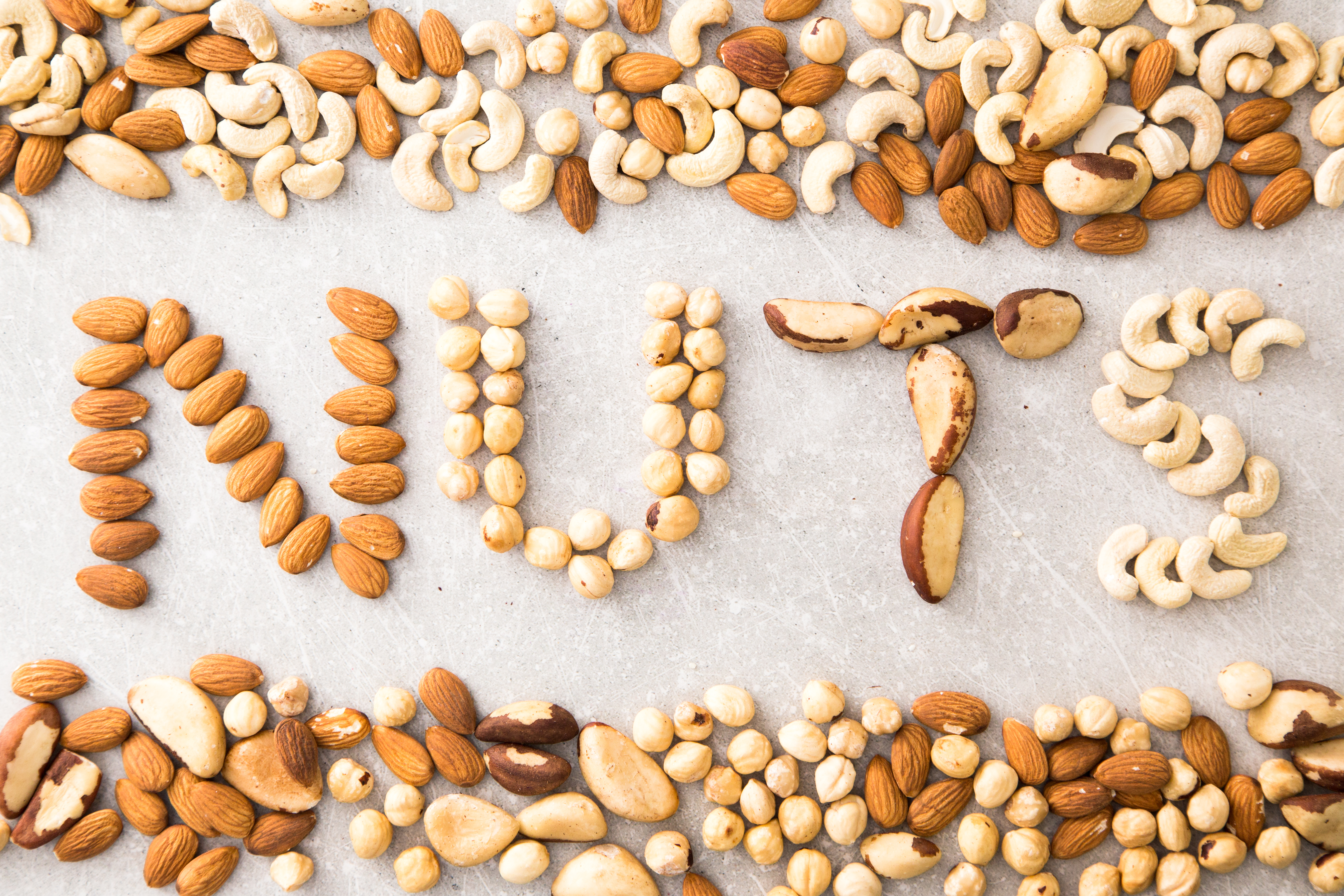
.
Sure, you will read in some recipes (some traditional Italian often) that the nuts should be included in the mixture completely raw, but here’s the thing (with all respect to Italian tradition): roasted nuts can give tons of flavors to the sauce and add a bit of crunchiness to its texture. Just make sure you cool them off before using them in a pesto unless you want to get a gummy paste instead off crispy texture.
10. Storing It on The Counter
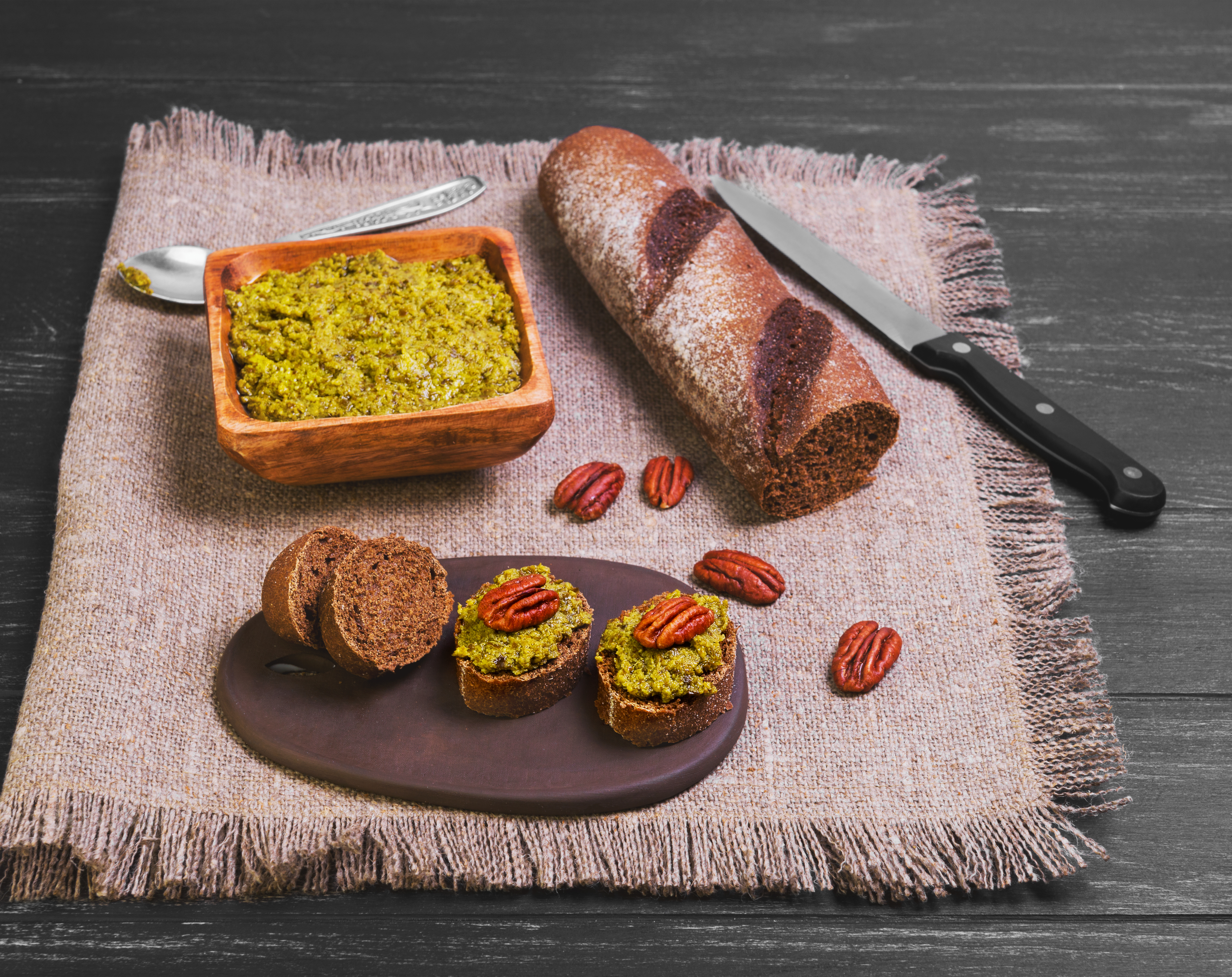
Do you want brown pesto? Because that’s how you get brown pesto. Pesto doesn’t have enough acid to keep the beautifully green color at a room temperature. If you want to avoid the unsightly brown shade, cover the pesto with a plastic wrap and refrigerate until you’re ready to use it, but I consider eating it straight away the best way to store it. All jokes aside, refrigerated pesto will be good for five to seven days, but it can also be stored in the freezer for three to four months. However, you must know how to freeze it properly. It must be poured into a sealed container, and the surface of the sauce should be covered with a layer of olive oil.
Some of these mistakes are obvious even for pesto “amateurs,” while others are a tricky terrain. However, if there is one thing they have in common – they’re unforgivable in the world of perfect pesto.
15 Great Ways to Use Pesto
If you’re anything like me, you could eat pesto alone with a spoon as a meal, but there are many other great ways to use this flavorful sauce, and it would be a shame to miss out on them. Its creamy yet crunchy texture can be an ideal addition to many traditional dishes, and while some ideas are so silly that I’d never remember to try them, some are so logical that I can’t forgive myself for haven’t thought of them before.
If you are unfamiliar with them, read on to get some great ideas.
As Traditional as It Gets
What's the first thing that pops into your mind when someone mentions "pesto"? That's right – pasta. And it is no wonder since these two make one of the happiest marriages in culinary history. There are literally hundreds of ways to combine them, and you can't go wrong with either of them.
However, beware of the common mistake when combining pesto and pasta: cooking it. Pesto should never be cooked when served with pasta. Instead, it should be added after the pasta is already cooked. Also, don’t forget the Ligurian trick of mixing a small ladle of the cooking water into the pesto just before adding it to the pasta to dilute the concentrated pesto and make it adhere to noodles.
From Italy with Love
Another question: what meal originated from Italy we love the most? Pizza is the correct answer. So, if pesto and pasta are the ideal marriage, pizza and pesto are the most passionate love affair there is.
Depending on how much time you have, you can just drizzle your takeout pizza with pesto, or you can start from the scratch and make your own pizza dough and treat it with a spread of pesto, fresh tomatoes, and mozzarella.
Potato Pesto
See, sounds like a fine rime… Whether mashed or baked, potatoes can always benefit from a delicious green twist. If you are adding it to mashed potatoes, add it only after you’ve already done with the mashing. It will stir in nicely since both have a soft texture. For a really sinful experience, you can even dip French fries in pesto. It’s not like the French and Italians are mortal enemies…
Back to Italy with Bruschetta
Pesto and Bruschetta are a match made in heaven: crispy bread slices, creamy and aromatic sauce, what's there not to like? Just like with pizza, you can combine the sauce with mozzarella and tomatoes, but you won’t be wrong if you use grated Parmesan cheese and olive oil.
Garlic Bread Is so Yesterday
Move out garlic bread, there’s a new player in town, and it means business. There are two variations of this dish. You can make it as crunchy French bread with a spread of pesto on each slice, or you can prepare the ultimate comfort/crowd-pleasing snack by making pull-apart bread with pesto, butter, and melted cheese.
Go Green for Muffin
If your first associations to muffins are flavors like blueberry, banana, and chocolate, then you have never tried the combination of pesto, spinach, eggs, flour and other "muffiny” ingredients. Together, they make a tasty party snack or a powerful breakfast Popeye wouldn’t mind to try.
Dressing up chicken or fish
Tale as old as time: meat vs. marinade… Finding a perfect marinade to complement the flavor of the meat while having its own character and keeping the meat soft and tender, can be really difficult. Not for the hero of our story, though. Pesto makes a fabulous ingredient for grilling fish, shrimp or chicken, so don’t be afraid of giving it a shot. However, don’t just cover the meat with pesto. First, mix in some olive oil and lemon juice to make it smoother. You can also add more garlic or/and pepper.
Swirling it into a Soup
Yep, that’s a thing. Pesto can be a really delicious addition to almost any soup (veggie, chicken, bean, etc.). Not only it enriches soup’s taste, but also it also adds color and aroma. Because it is of the creamy texture itself, pesto will be very easy to swirl into soup after it is already cooked.
The American Way
Competing with pizza for the love of Americans, a burger is another sinful pleasure we like to enjoy. Now, could you ever imagine using pesto in this comfort food? Probably not. But, it can yield some pretty great results, especially if you are using it as a spread on a turkey burger. Just don’t use cheddar cheese, because both have a really strong taste. Combine pesto with Parmesan cheese – it is a more natural bond.
Start Your Day the Green Way
What’s one of the most frequent breakfast meals worldwide? I’ll take a lucky guess: scrambled eggs. Although tasty on their own, scrambled eggs can benefit from a green aromatic punch, and there can be no better way to get what they deserve than by adding a spoonful of pesto. But don’t stop there. Pesto can become the star of almost any breakfast. Put it on top of fried eggs or spread it on a slice of bread…
Quintessential Tastes of the Summer
If you ask anyone else what the two harbingers of summer are, you would probably get answers like “high temperatures” and “vacations.” For me, those are pesto and grilling, so why not join them together? Just imagine a grilled beefsteak with some pesto on top of it. If you really want a harmony of flavors in your mouth, you can include mozzarella and prosciutto in the story.
Green Is for Salad
The salad is one of the first things we associate with green color, which makes pesto a perfect candidate for the role of salad dressing. As for the rest of them, you can use whatever you want: from tuna and grilled chicken to tomato and celery. You can also make cold pasta salad – just use cold pasta (whole grain if you prefer it healthier), and add cherry tomato, baby spinach, olives, mozzarella balls and dress them all up with a couple of tablespoons of pesto.
Party Dip
So, you have a bunch of friends coming over, and you have prepared delicious snacks, French fries, tortilla chips, crackers to name a few? Now all you’re missing is a dip that will have them praising your culinary skills for years. No problem. Just mix pesto with sour cream, Parmesan cheese, mayonnaise, capers and lemon zest. For a quicker solution, you can just stir in a tablespoon of pesto into mayonnaise or perfectly softened cream cheese. Pesto has such a strong aroma that it will easily overpower every other dip.
Make It Exotic
Our obsession with hummus is still relatively young, but we are already looking for ways to make it even more interesting and tasty. One of them is definitely by adding a couple of tablespoons of pesto and topping it with pine nuts and mint. Oh, yes, and a dash of paprika won’t hurt anyone.
Pesto Plays Ball
Oh, the good old meatballs. Everyone loves them (except vegetarians), and they can never become boring. But I bet you didn’t know they can become even more interesting? Just add some pesto and grated Parmesan to your regular turkey meatballs mixture, and you’ll see my point. Also, you can double the pleasure, cook in a pesto-based sauce.
There Is No Doubt That Pesto Is a Serious Sauce That Should Be Taken Seriously
When some dish has such a long history and meaningful origin it is important to approach it with respect, and learn whatever you can about it before you move on to preparation. Only then can you dare to experiment with different methods and applications. But once you master it, you will never need to buy it in jars in the supermarket, because you'll become the master of pesto, and that is not a small thing.

